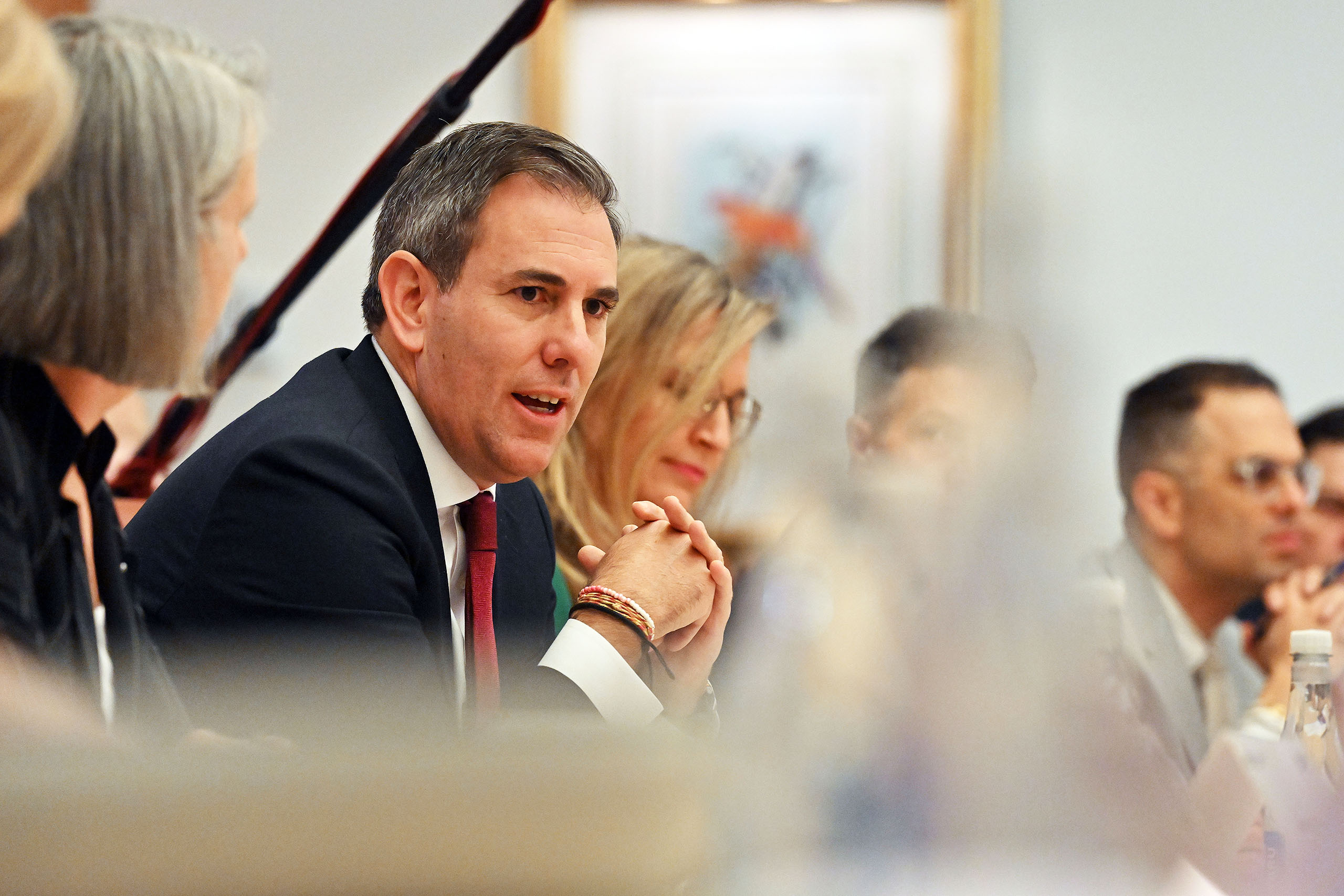Treasurer Jim Chalmers’s economic reform roundtable may not have met everyone’s hopes or expectations. But it did achieve three things.
First, it put the issue of productivity front and centre of the Albanese government’s second term. The government’s first-term priority was dealing with cost-of-living pressures. They haven’t gone away: prices, on average, are almost 20 per cent higher than they were four years ago — five percentage points more than wages have risen over the same period — and real per capita household disposable income is still some 6 per cent below its peak. But at least inflation is back within the Reserve Bank’s target band, wages are rising faster than prices, and interest rates are coming down.
Now that the economy is starting to rely less on public spending, it’s appropriate that policy-makers turn their attention to reversing the dramatic slide in Australia’s productivity performance over the past two decades — after having ignored it for most of that period, as perhaps best exemplified by how the twenty-eight recommendations in the Productivity Commission’s first five-yearly productivity review and the seventy-one in its second review have been gathering dust since 2017 and 2023 respectively.
As Productivity Commission chair Danielle Wood observed in her address to the National Press Club the day before the roundtable, “growth has simply fallen down the list of priorities in policy-making.” So it was encouraging to read Jim Chalmers saying, at the end of those talks, that higher living standards are “the holy grail, and a more productive economy is how we deliver it.”
Second, the roundtable appears to have created the momentum for quickly implementing a number of productivity-enhancing proposals that have been around for some time but have failed to gain traction.
These include reducing some of the red tape that adds to the cost of new homes and the time taken to build them; reducing delays in environmental approvals; eliminating “nuisance tariffs” that cost more to comply with than the revenue they raise; reducing impediments to investment in housing by superannuation funds; improving labour mobility by enhancing the recognition of professional and trade qualifications earned in different states; and developing a more sustainable system for charging road users.
None of them are new ideas: but until last week there hasn’t been a sufficiently broad-based commitment to advance any of them, and now there is. And progress in these areas could produce tangible results in relatively quickly.
Third, and perhaps most importantly, the roundtable appears to have laid the basis for what might be called adult conversations about broad-ranging reform of Australia’s taxation system. Again, the ideas canvassed in Canberra were not new. And some people will have been disappointed that the prime minister and, subsequently, the treasurer appear to have ruled out significant tax reforms before the next election.
But the political reality is that the Albanese government doesn’t have a mandate for ambitious tax reform in this parliament — because it didn’t seek one at the election that delivered it such an historically large majority in the House of Representatives. Unlike John Howard, who sought a second-term mandate for introducing the GST while defending a first-term majority of forty seats (of which he lost fourteen), Anthony Albanese was defending a first-term majority of just two seats. He was also a senior minister in the Gillard government which, having pledged at the 2010 election not to introduce a carbon tax, did precisely that almost immediately after winning the election by the narrowest of margins, giving its opponents the ammunition to mount one of the most effective political campaigns ever waged.
Having defied the postwar tradition of first-term governments losing seats in pursuit of a second term, Anthony Albanese and Jim Chalmers now have the political capital required to pursue an ambitious reform agenda — but also a history that will make them determined to avoid squandering it, as other governments in similar positions (in particular, Tony Abbott’s and Campbell Newman’s) did by attempting to implement policies they previously pledged they wouldn’t.
At the conclusion of the roundtable, Jim Chalmers laid the basis for those “adult conversations” by outlining three principles that will underpin the government’s thinking about tax reform options.
The first of these is an “intergenerational lens.” That’s something I’ve previously advocated in these pages; and the case for doing so was also powerfully articulated by Grattan Institute chief executive Aruna Sathanapally in her presentation to the roundtable, and by another participant, Bob Breunig, director of ANU’s Tax and Transfer Policy Institute, in a paper he co-authored in May. Each demonstrated that Australia’s tax system imposes a disproportionately high burden on younger working Australians, and a correspondingly lower burden on older, asset-rich Australians.
The second principle is to consider how the tax system can provide better incentives for productivity-enhancing business investment, the dearth of which over the past decade or more has been one of the reasons for Australia’s deteriorating productivity performance (as demonstrated by, among others, the head of the Reserve Bank’s economic analysis department, Michael Plumb). But a large cut in the company tax rate, as advocated by the major business organisations (among others) is a very expensive, and not necessarily the most effective, way of encouraging business investment, as other Reserve Bank research has shown).
And the third principle is about making the taxation system simpler and more sustainable — one important dimension of which is generating the revenue needed to pay for the services the Australian public expects governments to provide.
Given current projections showing budget deficits as far as the eye can see, both federally and in the state, this almost inevitably means raising more revenue than the taxation system as currently structured seems capable of doing. And that in turn means taxation reform in the 2020s must mean making some people worse off. We can’t delude ourselves that everyone can be better off, as was possible in the early 2000s when the Howard government was able to draw down continuing budget surpluses in order to ensure that everyone was better off.
In making that case, two other announcements made outside the roundtable suggest the government is also serious about reining in the rapid growth in spending. The first was Mark Butler’s proposal to shift children with mild to moderate development delay or autism from the NDIS to another program, and the second was Tanya Plibersek’s decision to gradually return the “deeming rates” that form part of the means test for the age pension to their pre-pandemic levels. Together, these represent an important quid pro quo for any moves to raise additional revenues through tax reform.
But the point remains that governments shouldn’t proceed with decisions that make a significant number of people worse off without having secured an electoral mandate for doing so. The encouraging thing is that the government — with the backing of most of those interest groups represented, however imperfectly, around the economic roundtable — now seems emboldened to contemplate seeking such a mandate at the next election.
So, while the roundtable was, inevitably, “talk” rather than “action,” it does seem to have laid the ground work for some near-term action on a series of small but sensible, pragmatic measures that have been stalled for too long, and to have opened the door to a pathway to more ambitious reforms that has been closed for too long. In both those senses, it was a worthwhile exercise. •




